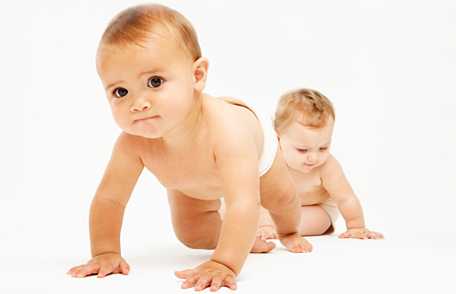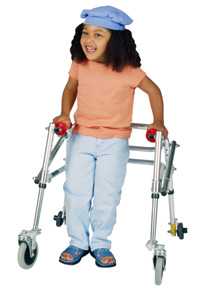What You Need to Know About Cerebral Palsy
 Cerebral palsy is the most common motor disability in childhood, and these children need support. Professionals who serve young children play an important role in identifying the early signs and symptoms of cerebral palsy.
Cerebral palsy is the most common motor disability in childhood, and these children need support. Professionals who serve young children play an important role in identifying the early signs and symptoms of cerebral palsy.
Cerebral palsy (CP) is the most common motor disability in childhood, and these children and their families need support. Professionals who serve young children, from early childhood educators to pediatricians, play an important role in identifying the early signs and symptoms of cerebral palsy so that children can be connected to the services and supports they need. Find out more about cerebral palsy and what you can do to help children with cerebral palsy get identified early.
What is cerebral palsy?
CP is a group of disorders that affects a person's ability to move and maintain balance and posture. CP is caused by abnormal brain development or damage to the developing brain that affects a person's ability to control his or her muscles. The specific cause of most cases of CP is unknown.

How does cerebral palsy impact children?
CDC estimates that about 1 in every 323 children living in multiple communities in the United States has cerebral palsy. CDC's estimate comes from the Autism and Developmental Disabilities Monitoring (ADDM) Network, which tracks the number and characteristics of 8-year-old children with autism spectrum disorder and other developmental disabilities in diverse communities through the United States. Based on our most recent report on children who were 8-years-old and living in ADDM CP Network communities in 2008, we know that:
- CP is more common among boys than girls.
- CP is more common among Black children than White children. Hispanic and White children are about equally likely to have CP.
- Most (77%) of the children identified with CP have spastic CP. This means their muscles are stiff and, as a result, their movements can appear awkward.
- Over half (58%) of the children identified with CP could walk independently.
- Many of the children with CP also have at least one co-occurring condition—41% have co-occurring epilepsy and almost 7% have co-occurring autism spectrum disorder.
Signs and Symptoms
The symptoms and functioning of each person with CP varies. CP does not get worse over time, but the exact symptoms can change over a person's lifetime. From birth to 5 years of age, a child should reach movement goals—also known as milestones—such as rolling over, sitting up, standing, and walking. A delay in reaching these movement milestones could be a sign of CP. The following are some other early signs of CP.
- A child with CP who is less than 6 months old:
- Might feel stiff
- Might feel floppy
- When held cradled in your arms, the child might seem to overextend his/her neck and back, constantly acting as if he/she is pushing away from you
- When you pick the child up from lying on the back, his/her head might fall backwards
- When you pick up the child, his/her legs might get stiff and cross or scissor
- A child with CP who is more than 6 months old:
- Might not roll over in either direction
- Might not be able to bring his/her hands together
- Might have trouble bringing the hands to his/her mouth
- Might reach out with only one hand while keeping the other fisted
- A child with CP who is more than 1 years old:
- Might not crawl
- Might not be able to stand with support
How can professionals who serve young children help?
You spend your day working with children, and you are probably already familiar with many milestones—such as pointing at objects, smiling, and playing with others—that mark a child's development. All children are unique, but sooner or later, you will see a child who is not developing as he or she should. You are a valuable resource to families! They look to you for information on their child, and they trust you. Encourage the families you work with to track their child's development, including movement milestones, and get help if they are concerned. You can also encourage the child's family to contact the local early intervention system (birth to age 3 years) or local school system (3 years and older) for an evaluation.
It is also important to remember that a child with CP may have other conditions that can make it difficult for him or her to carry out daily activities and participate at home, in school, and in the community. Professionals who serve young children can help identify signs of CP as well as the other developmental disabilities or neurological conditions that children with CP often have, such as epilepsy and autism spectrum disorder. Identifying both cerebral palsy and other co-occurring conditions early can help ensure that children are screened and connected to the appropriate services and supports they need to address each condition.
More Information
More Information
- Cerebral Palsy Home
- 2013 ADDM Network Community Report on cerebral palsy [12.7 MB]
- Free developmental milestone Checklists
- CDC's "Learn the Signs. Act Early" program
- American Academy of Pediatrics' recent clinical report, “Motor Delays: Early Identification and Evaluation”
- Find early intervention resources in your state
- Page last reviewed: March 3, 2014
- Page last updated: March 3, 2014
- Content source:
- National Center on Birth Defects and Developmental Disabilities
- Page maintained by: Office of the Associate Director for Communication, Digital Media Branch, Division of Public Affairs




 ShareCompartir
ShareCompartir